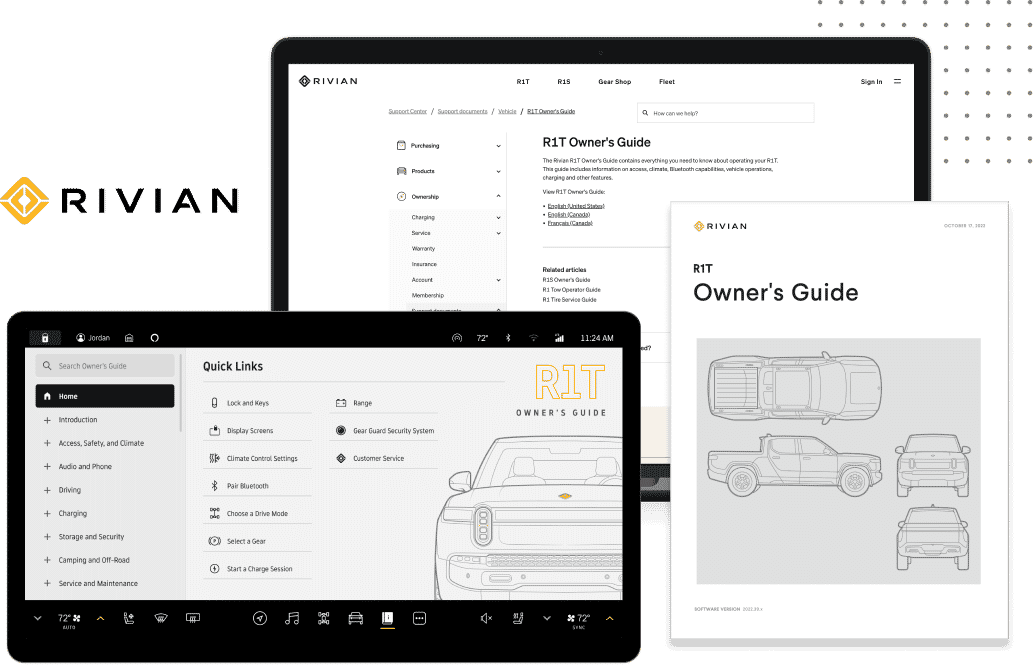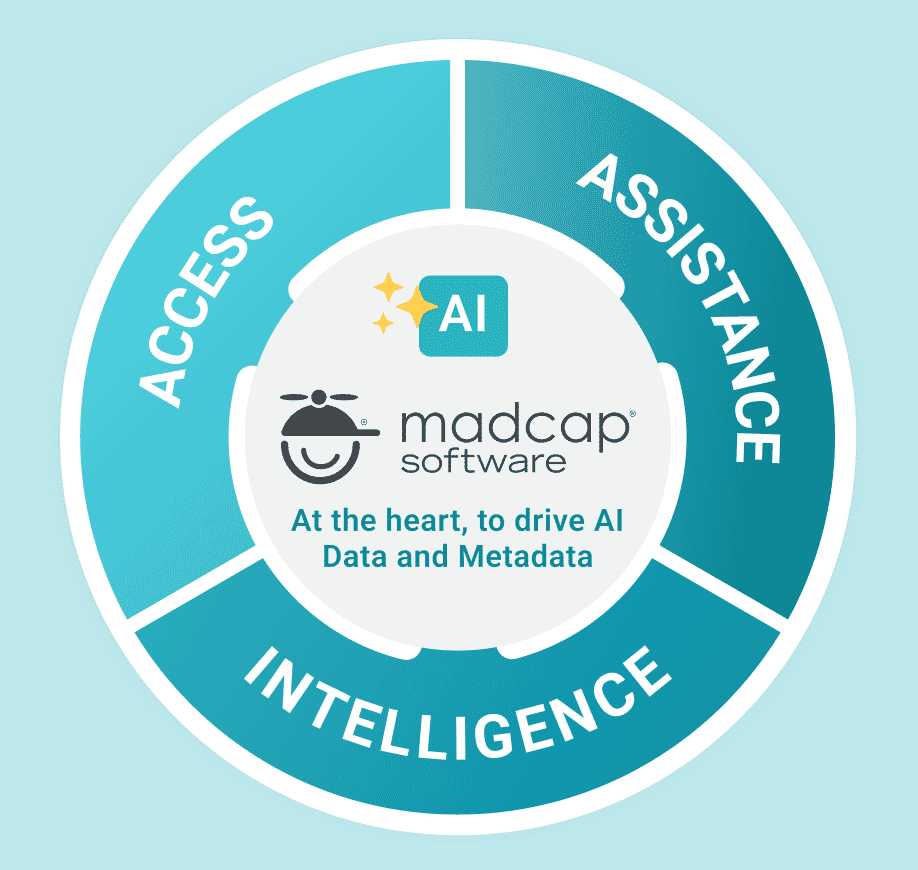Customer Success Story
Microsoft Health Solutions Group Uses MadCap Flare to Streamline Delivery of Amalga UIS Online and Print Documentation
Goals
- Streamline process of content development and delivery
- Enable greater automation through source-control integration
- Improve process of updating API SDK for partners
Benefits
- Single-sourcing enables 11 online and print documentation outputs to be built in two days
- Source-control integration via XML code and Flare snippets facilitates development of partner API SDK
- User friendly interface helps writers to get up and running quickly
- Variables and the separation of content from style give writers maximum flexibility in publishing content
MadCap Software Solutions and Services:
In 2009, the United States government has highlighted the need for the healthcare industry to embrace online data management to improve care and control rising costs.
Microsoft Health Solutions Group (HSG), an innovator in this sector, already is helping hospitals such as Johns Hopkins Medicine, NewYork-Presbyterian, El Camino Hospital, and Seattle Children's Hospital to enhance their care and efficiency through its healthcare information solutions. Hand-in-hand with those solutions is leading edge documentation on how to effectively use them.
Today, Microsoft HSG is using MadCap Flare to streamline the publishing of print and online documentation for the newest version of its Amalga Unified Intelligence System (UIS) 2009, which was launched in April 2009.
Based on its initial success with the Amalga UIS documentation, Microsoft HSG plans to extend Flare across the HSG enterprise group and is investigating the potential for using Flare across the entire HSG division.
Multiple Customers and SKUs Add Complexity
Microsoft Amalga UIS is a next-generation enterprise data aggregation platform that enables hospitals to unlock patient data stored in a range of systems and make it easily accessible to every authorized member of the team inside and beyond the hospital – including the patient – to help drive real-time improvements in the quality, safety and efficiency of care delivery.
The single-sourcing in Flare is tremendously advantageous for quickly delivering the content our customers need. We've taken a huge leap with Flare, and there's still a lot more potential to tap.
Harold Gross Documentation Manager, Microsoft Healthcare Systems Group
Prior to Amalga UIS 2009, the Microsoft HSG documentation team manually created different documents and had no online SDKs to support the software. This need to manage multiple customer versions, along numerous SKUs, led to significant redundancies in development and quality control.
The launch of Amalga UIS 2009 required new print and online documentation–providing an opportunity to select the medical documentation publishing software that would enable the writers to best meet customers' needs. Microsoft HSG evaluated the industry's leading authoring solutions, many of which have been on the market for more than a decade. After careful review, the documentation team chose relative newcomer MadCap Flare with its next-generation approach to authoring and managing content workflow.
"MadCap Flare is giving us state-of-the-art capabilities while offering the lowest cost of ownership of any authoring software we've seen on the market," said Harold Gross, documentation manager for the Microsoft Amalga product line.
"Most authoring products are based on proprietary code or other special coding that makes it difficult to move away from them," Gross explained. "With Flare's native XML architecture, we could easily migrate the content to another application, but its powerful functionality and ease of use remind us why we want stay with Flare every time we use it."
Single-sourcing Speeds Delivery, Removes Redundancies
Key factors in Microsoft choosing Flare are its native XML architecture, single-source publishing, and the ability to add seamless source control integration.
"We have a broad range of customers for our Amalga UIS software that includes everyone from database analysts at the backend to nurses on the hospital floor, so we need to deliver information in a variety of formats," said Gross.
With Flare's native XML architecture, we could easily migrate the content to another application, but its powerful functionality and ease of use remind us why we want to stay with Flare every time we use it.
Harold Gross Documentation Manager, Microsoft Healthcare Systems Group
Gross added, "The single-sourcing in MadCap Flare is tremendously advantageous for quickly delivering the content our customers need. Once we developed the documentation, it took us just two days to build two CHM files for our SDKs, nine PDF manuals, and a full WebHelp version of all the documentation to meet the deadline for our product launch."
Another important factor is the availability of variables and conditional text to support content reuse and consistency, said Gross, who notes, "Flare's approach to variables is very slick. We like the way we can override variables for a particular target. "The variables combined with the separation of content and style give us a great deal of flexibility."
The team also liked the fact that Flare did not require schema locking. Instead, by separating the structure from style, Flare provided Microsoft HSG's writers with the flexibility to present data across different topics in the most effective way possible.
As soon as Flare was in place, the Microsoft HSG documentation team was able to get up and running quickly, Gross noted: "The learning curve was a low ramp. In fact, most of our challenges were with people learning how to write for single-sourcing and figuring out what content they could turn into snippets for reuse. Once they got it, our snippet collection exploded."
Microsoft HSG's technical writers soon went beyond basic content reuse with snippets to sophisticated automation integration. Utilizing XSLT to reflect against the Amalga UIS product code, snippets are created for the API software developer's kit (SDK) for partners. These snippets are extractions of comments in the constantly changing code. Finally, the snippets are then inserted into the broader documentation source control.
"This is the most effective way to update the API SDK that we've produced to date," Gross says, "Moreover, because Flare is pure XML, we were able to develop our source-control integration solution on our own with just four weeks of effort. Going forward, we have a roadmap for automating this process even further."
In addition to expanding the functionality of documentation and online developer Help for Amalga UIS, Microsoft HSG also plans to localize it for customers worldwide. Flare's Unicode support and command line compiler, which enables bidirectional text, will play an important role in facilitating the translation.
"Because Flare provides a command line compiler that can handle right-to-left languages, such as Hebrew and Arabic, as well left-to-right Western and Asian languages," Gross explains, "that means we can simply send the original source content for localization. Once the translated content comes back, it becomes part of the project that we can have Flare build."
"We've taken a huge leap with Flare," Gross adds, "And there's still a lot more potential to tap."





